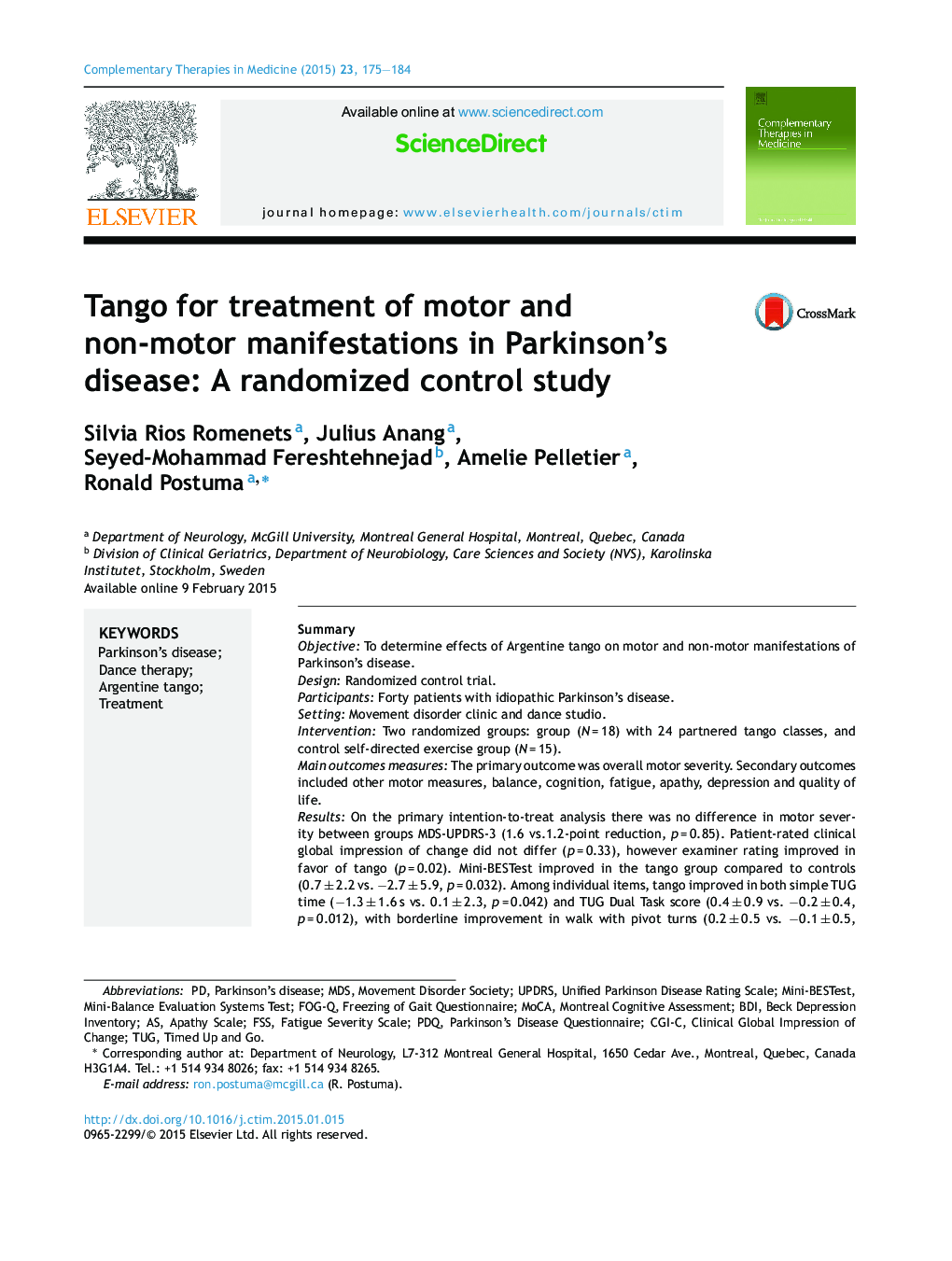| کد مقاله | کد نشریه | سال انتشار | مقاله انگلیسی | نسخه تمام متن |
|---|---|---|---|---|
| 2628946 | 1136505 | 2015 | 10 صفحه PDF | دانلود رایگان |
• Argentine tango can improve balance in patients with Parkinson's disease.
• There was no benefit of tango on motor severity of Parkinson's disease.
• Tango has modest benefits upon cognition and fatigue.
• Tango classes are highly enjoyable and give overall satisfaction.
• The social aspects that emerged from the tango classes have positive effects.
SummaryObjectiveTo determine effects of Argentine tango on motor and non-motor manifestations of Parkinson's disease.DesignRandomized control trial.ParticipantsForty patients with idiopathic Parkinson's disease.SettingMovement disorder clinic and dance studio.InterventionTwo randomized groups: group (N = 18) with 24 partnered tango classes, and control self-directed exercise group (N = 15).Main outcomes measuresThe primary outcome was overall motor severity. Secondary outcomes included other motor measures, balance, cognition, fatigue, apathy, depression and quality of life.ResultsOn the primary intention-to-treat analysis there was no difference in motor severity between groups MDS-UPDRS-3 (1.6 vs.1.2-point reduction, p = 0.85). Patient-rated clinical global impression of change did not differ (p = 0.33), however examiner rating improved in favor of tango (p = 0.02). Mini-BESTest improved in the tango group compared to controls (0.7 ± 2.2 vs. −2.7 ± 5.9, p = 0.032). Among individual items, tango improved in both simple TUG time (−1.3 ± 1.6 s vs. 0.1 ± 2.3, p = 0.042) and TUG Dual Task score (0.4 ± 0.9 vs. −0.2 ± 0.4, p = 0.012), with borderline improvement in walk with pivot turns (0.2 ± 0.5 vs. −0.1 ± 0.5, p = 0.066). MoCa (0.4 ± 1.6 vs. −0.6 ± 1.5, p = 0.080) and FSS (−3.6 ± 10.5 vs. 2.5 ± 6.2, p = 0.057) showed a non-significant trend toward improvement in the tango group. Tango participants found the activity more enjoyable (p < 0.001) and felt more “overall” treatment satisfaction (p < 0.001). We found no significant differences in other outcomes or adverse events.ConclusionArgentine tango can improve balance, and functional mobility, and may have modest benefits upon cognition and fatigue in Parkinson's disease. These findings must be confirmed in longer-term trials explicitly powered for cognition and fatigue.
Journal: Complementary Therapies in Medicine - Volume 23, Issue 2, April 2015, Pages 175–184
